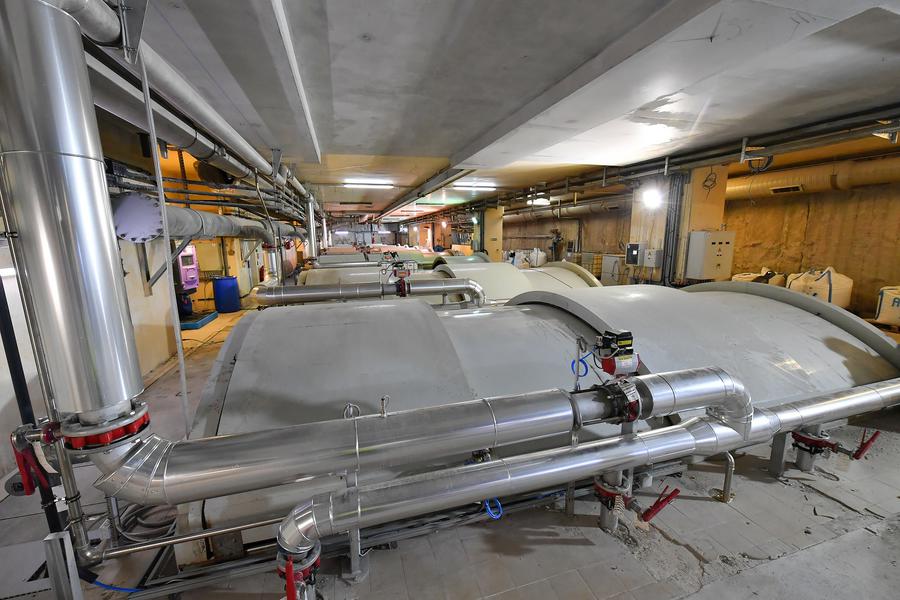The Monégasque government visited yesterday the site of the multimillion wastewater plant in Fontvielle to check on the progress of ongoing works. Construction works are taking place at the plant to build an extension that will increase the plant’s purification performance. Two parking levels had to be removed to make space for the extension which is a model of integration of an industrial plant in an urban environment.
The Waste Water Treatment Plant (UTER) treats wastewater from the Principality and the neighbouring areas located across the border in France. SMEaux – Monaco’s Water Company – signed the extension contract with the Monégasque government back in 2015 to increase the processing capacity by 30 per cent and to manage changes in water flows in future.
Unusual location
The plant is located in “Le Triton” – an industrial building of 10 levels – constructed next to the Urban and Industrial Waste Incineration Plant. The extension work required the removal of two parking levels of the building and the installation of advanced and innovative technology called MBBR (Moving Bed Biofilm Reactor). This technology allows to meet the highest environmental standards when it comes to wastewater.
The extension project also meant taking into account the larger volumes of dirty and odours air. In order to purify the air, the plant added a system with activated carbon filters that are used for deodorisation. This way the plant takes care of not only purifying Monaco’s water, but also its air.

The Waste Water Treatment Plant (UTER) © Direction de la Communication – Michael Alesi
Sustainable development
The plant is scheduled for completion for September 2020, in advance to the original plan to inaugurate it by the end of the year. The expansion project is an important part of Monaco’s sustainable development policy allowing the Principality to treat wastewater locally in the most efficient way despite the space constraints.
SMEaux is a member of the National Energy Transition Pact and one of its projects is to save resources. Like seawater, wastewater can be used to heat or cool buildings. It is one of the solution that SMEaux seeks to apply to the water treatment plant in Monaco.
The Principality’s objective is to cut its greenhouse gas emission by 50 per cent by 2030 (compared with the baseline year of 1990) and achieve carbon neutrality by 2050. Last year the Prince’s Government invited everyone to join the initiative on a voluntary basis to change consumption patterns and habits.










